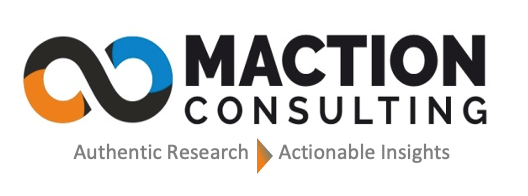In today’s competitive landscape, businesses pour significant resources into advertising. But are those dollars truly hitting the mark? Are your ads reaching the right audience, driving conversions, and ultimately contributing to your bottom line? Without robust measurement, advertising becomes a costly guessing game. This is where analytics tools come into play – they are your indispensable scorekeepers, providing the data and insights you need to understand, optimize, and maximize your advertising efforts.
At its core, tracking ad success with analytics tools means understanding the entire journey a potential customer takes after encountering your advertisement. This isn’t just about counting clicks; it’s about delving into user behavior, attributing conversions, and calculating the true return on your ad spend (ROAS).
Beyond the Click: What Analytics Tools Reveal
Modern analytics platforms go far beyond basic impression and click-through rates (CTR). Tools like Adobe Analytics and Google Analytics 4 (GA4) offer a comprehensive suite of features that allow you to:
- Attribute Conversions: Understand which ad campaigns, channels, or even specific keywords are leading to desired actions like purchases, sign-ups, or form submissions. This is crucial for allocating your budget effectively.
- Analyze User Behavior: See how users interact with your website or app after clicking an ad. Are they bouncing immediately? Are they exploring multiple pages? Are they adding items to their cart but not converting? These insights highlight areas for improvement in your landing pages or user experience.
- Measure Cross-Channel Performance: Track how your ads perform across different platforms – social media, search engines, display networks, and even traditional media that drives online engagement.
- Calculate ROI and ROAS: Determine the direct financial impact of your advertising campaigns by linking ad spend to revenue generated. This is the ultimate metric for demonstrating the value of your marketing efforts.
- Identify Audience Segments: Understand which demographics, interests, and behaviors respond best to your ads, allowing for more precise targeting in future campaigns.
The Power of Data: Two Case Studies
Let’s explore how real businesses leverage analytics to transform their ad strategies.
Case Study 1: The Online Retailer and Attribution Modeling
A mid-sized online fashion retailer was running numerous digital ad campaigns across Google Search, Facebook, and Instagram. Their initial tracking showed strong CTRs, but they struggled to understand which channels were truly driving sales. They implemented Adobe Analytics, focusing on multi-touch attribution models.
Instead of just crediting the last ad a customer clicked before purchasing, Adobe Analytics helped them see the entire customer journey. They discovered that while Instagram ads often initiated the customer’s interest, Google Search ads were frequently the last touchpoint before conversion. Furthermore, they found that a specific sequence – Instagram exposure followed by a retargeting ad on Facebook, then a Google Search for a specific product – yielded the highest conversion rates.
Outcome: By understanding these complex attribution paths, the retailer reallocated 15% of their ad budget from generic Google Search terms to more targeted Instagram awareness campaigns and Facebook retargeting, leading to a 22% increase in overall ROAS within three months.
Case Study 2: The Local Service Provider and Offline-to-Online Tracking
A local home repair service company wanted to test the effectiveness of traditional billboard advertising in a new area. They knew their service was often sought in emergencies, making billboards a viable option for brand recall. To bridge the gap between offline and online, they included a unique, easy-to-remember vanity URL on the billboard (e.g., www.theirservicename.com/billboardoffer).
Using Google Analytics, they created a custom report to track traffic specifically coming from this vanity URL. They also ran paid search ads targeting emergency keywords in that area simultaneously. By monitoring the direct traffic to the unique URL versus the paid search traffic, and correlating it with incoming calls (tracked via a separate call tracking system integrated with their CRM), they could assess the billboard’s direct online impact and its indirect influence on search queries.
Outcome: They found that while the direct traffic to the vanity URL was modest, there was a significant surge in branded search queries from the billboard’s locality shortly after the campaign launched. This suggested the billboard was effectively building brand awareness, which then translated into online searches and phone calls. This insight justified continued investment in outdoor advertising as a top-of-funnel strategy, complementing their digital efforts.
Implementing Your Analytics Strategy
To effectively track your ad success, start with clear objectives. What do you want your ads to achieve? Increased sales, leads, brand awareness? Then, choose the right analytics platform (or combination) that aligns with your needs. Ensure proper tagging and tracking of all your campaigns, and consistently review your data.
By embracing analytics tools, businesses can move beyond guesswork, optimize their ad spend, and gain a competitive edge. It’s no longer about throwing money at ads and hoping for the best; it’s about making informed, data-driven decisions that translate directly into business growth.


